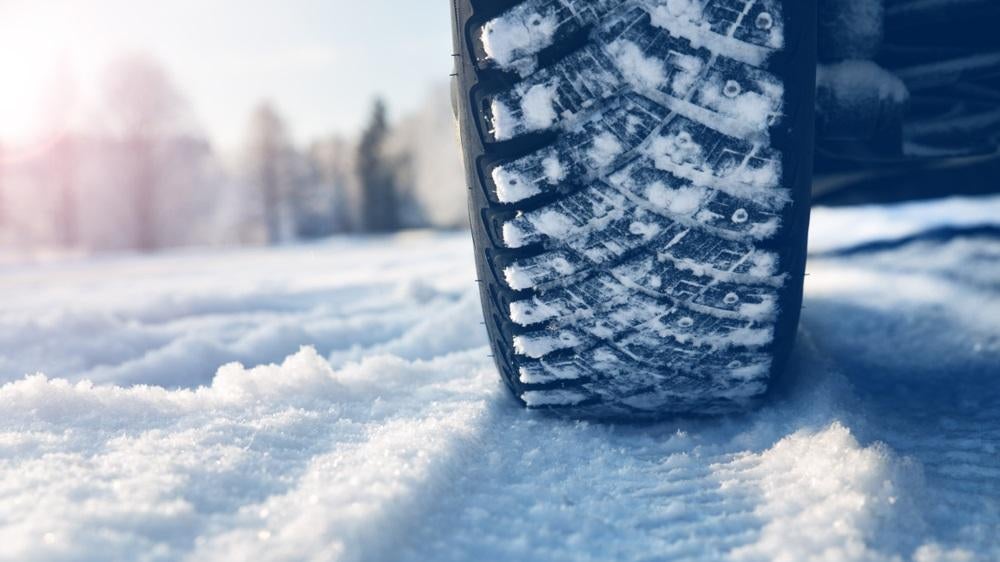Understanding Winter Tires and Their Advantages
Discover the necessity of winter tires for cold conditions. Understand their unique design and the safety they provide on snowy and icy roads.

Winter tires are an essential component for vehicle safety during the colder months. They are specifically designed to provide enhanced grip on icy and snowy roads, making driving in winter conditions safer and more comfortable. This article delves into the nitty-gritty of winter tires and their significant advantages.
Delving Into the World of Winter Tires
Dealing with the snow-bound streets or icy roads is a yearly reality for many drivers. It's in such harsh driving conditions that winter tires show their true worth. But what renders them so indispensable? The answer lies in their unique design and purpose, which we will unfold as we progress.
Table of Contents
- Understanding the Essence of Winter Tires
- Key Design Elements of Winter Tires
- Safety Aspects of Winter Tires
- Winter Tires Vs. All-Season Tires
- Choosing the Right Winter Tires
Understanding the Essence of Winter Tires

In simple terms, winter tires are specialized rubber casings designed to optimize your vehicle's performance in cold, snowy, and icy conditions. They are often distinguishable from other types of tires by the snowflake or mountain symbol on their sidewall.
To expand, their vital role lies in their ability to maximize traction, minimize slippage, and grant drivers better control in winter conditions. Regardless of whether you drive a compact car, a huge SUV, or a high-powered sports car, fitting winter tires in cold conditions is advantageous. Now, let's have a look at what specifically makes winter tires uniquely suitable for these harsh conditions.
Key Design Elements of Winter Tires

The specifics of winter tire designs play a huge role in their performance. From the rubber formulation to the tread design, every aspect is considered and adjusted to suit driving in winter conditions.
Optimized Rubber Composition
The rubber used in winter tires is tailored to stay pliable in freezing conditions, unlike the rubber in all-season or summer tires, which harden. This pliability allows winter tires to mold to the micro-roughness of the road and provides better grip on both wet and icy surfaces.
Sophisticated Tread Patterns
Winter tires feature a unique tread design that aids in combating winter road challenges. Compared to all-season and summer tires, winter tires have more tread patterns - like sipes and grooves. These provide multiple biting edges that grip onto the snow and ice, hence reducing the likelihood of skidding or slipping.
Bigger Gap Between Treads
Hence, the tread depth and patterns are designed to reduce snow buildup and throw off excess snow. A more profound and complex tread design allows for improved traction on snowy or icy surfaces, while the wider gap between treads enables better snow 'evacuation'.
Safety Aspects of Winter Tires

The safety a winter tire brings to your snowy or icy journey cannot be overemphasized. The combination of design elements like optimized rubber, tread, and groove design translate not just into better drivability, but crucially, into more safety.
- Enhanced Traction: The flexible rubber compound and specialized tread design work together to offer increased traction on snowy and icy roads. This superior traction is especially crucial when accelerating from a stop, moving uphill, or even when travelling at a constant speed.
- Better Braking: Winter tires allow for significantly reduced braking distance in comparison to other tire types. Hence, whether it's an abrupt stop or a gradual halt in traffic, winter tires can respond more effectively.
- Improved Handling: Thanks to the improved traction, you can enjoy better, more reliable handling on curves and over slippery surfaces.
"Overall, these safety attributes can make all the difference between getting to your destination safely or finding yourself in a potentially dangerous situation on icy, snowy roads."
Winter Tires Vs. All-Season Tires
Many drivers often wonder if they really need to replace their all-season tires with winter tires for the season, or if their all-season tires are sufficient for the task. The truth is that while all-season tires are designed to perform adequately in various conditions, they simply do not match the superior performance and safety features of winter tires in snowy and icy conditions.
For instance, all-season tires' rubber hardens below 7°C (45°F), severely reducing their traction capabilities. On the other hand, the special rubber compound of winter tires stays flexible at far lower temperatures, aiding in better traction.
Thus, the answer depends on whether you encounter severe winter conditions where you live. If you do, switching to winter tires is undoubtedly recommended for superior performance and safety.
Choosing the Right Winter Tires

Being informed about the necessity of winter tires is one step; the next important move is to choose the right set for your vehicle and driving conditions. This decision should not be taken lightly as the safety, performance, and comfort of your drive depend on it. Here are a few critical considerations to assist when shopping for your next winter tires:
Vehicle's Tire Size
It's essential to choose a winter tire set that fits your car's specifications. You can refer to your vehicle’s owner manual or tire information placard (usually located on the inside of the driver's side door) for guidance.
Climatic Conditions
Consider your local winter weather. Some areas may see more icy conditions, while others receive heavy snowfall. Such variations in weather conditions can influence your choice of winter tires as some designs are better suited for specific conditions.
Driving Habits
Your driving habits play a key role in your selection process. If you tend to drive long distances during winter or frequently traverse hilly terrain, you may require a stud-able or studless winter tire for maximum performance. On the other hand, if you merely drive short distances within city limits, a standard winter tire is often sufficient.
Quality Marks
Look for winter tires bearing the "Three-Peak Mountain Snowflake" (3PMSF) symbol. This symbol indicates that the tires have passed standardized testing for severe snow services, offering assurance about their safety and quality.
When to Install Winter Tires
Now that you've decided to purchase winter tires, the next logical question is - when do you install these tires? The rule of thumb is to install them when the temperature drops to 7°C (45°F) or below consistently. This temperature is a key threshold as rubber compounds in all-season and summer tires begin to harden, hence reducing their traction capabilities. But the rubber composition of winter tires remains flexible and grippy even beyond this temperature, implying their need from this point onwards.
The Wrap-Up
Undeniably, driving in winter weather conditions can pose significant challenges, but fitting your vehicle with winter tires can be a game-changer. With their unique design and purposeful attributes, they enhance your drive's comfort and safety, thereby affording you peace of mind amid freezing conditions.
To sum up, if you reside in regions experiencing severe winter conditions, there's no debate – the safety benefits and the improved performance that winter tires provide place them ahead of all-season tires. So don't wait for the snowflakes to start accumulating, get your winter tires sorted out before Jack Frost comes to town.
After all, in the words of Benjamin Franklin, "An ounce of prevention is worth a pound of cure." Prepare yourself well for the winter roads ahead, and travel secure with the right set of winter tires.
What's Your Reaction?








































































